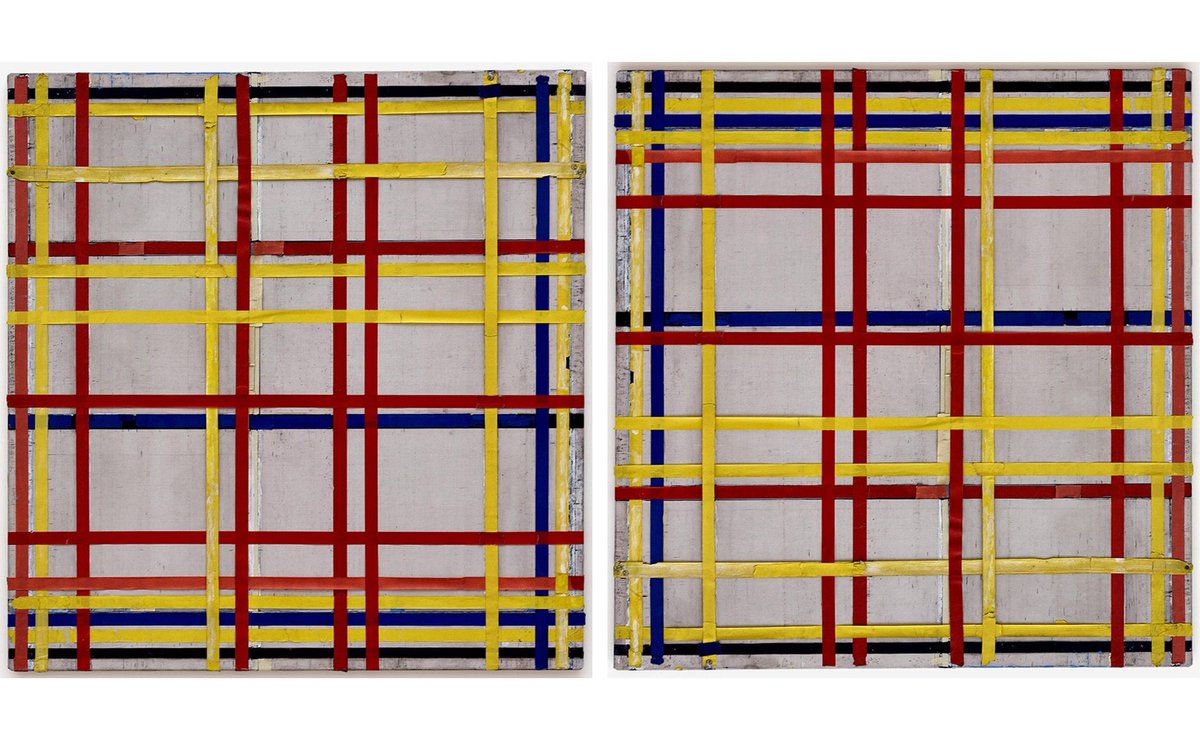31 October 2022, By Olivia Logan
The curator of a new exhibition in Düsseldorf has discovered that one painting by the Dutch artist Piet Mondrian has been hanging upside down for more than 75 years.
Mondrian painting hanging wrong for decades, curator says
The curator, who works for the Kunstsammlung art gallery in the city in North Rhine-Westphalia, argued that the 1941 artwork, New York City I, has likely been displayed the wrong way around for more than three-quarters of a century.
The abstract painting by Mondrian, who was born in Amersfoort in 1872, is made up of a series of interwoven red, yellow and blue tape lines on a white background, said to represent the New York skyline, and so while it is not immediately obvious which way round it should go, curator Susanne Meyer-Büser did stumble upon some clues while putting together the new exhibition.
“The thickening of the grid should be at the top, like a dark sky,” Meyer-Büser told The Guardian. “Once I pointed it out to the other curators, we realised it was very obvious. I am 100 percent certain the picture is the wrong way around.” In a similar painting by Mondrian, which hangs in the Paris Pompidou Centre and is also called New York City, thickening lines gather in the painting's top corner.
But it is a further observation made by Meyer-Büser that may provide the best proof of her theory. In a photograph of Mondrian’s studio, taken a few days after his death in 1944 and published in Town and Country magazine,New York City I can be seen pictured the other way round on an easel.
Dutch artwork tells a story
After Mondrian died, his painting was put on display at the famous MoMa gallery in New York City. According to Meyer-Büser, MoMA curators also placed the picture the wrong way round. In 1980, it was transferred to the Düsseldorf Kunstsammlung where the error continued.
Meyer-Büser is still unsure why this happened: “Was it a mistake when someone removed the work from its box? Was someone being sloppy when the work was in transit?” she said. “It’s impossible to say.” One obvious explanation for the confusion is that the abstract work does not bear the artist’s signature, most likely because he did not consider it a finished piece when he died.
Despite her discovery, Meyer-Büser has decided that the work of neoplasticism in primary colours should continue to hang upside down, fearing that it could otherwise be damaged. “The adhesive tapes are already extremely loose and hanging by a thread,” Meyer-Büser told Reuters. “If you were to turn it upside down now, gravity would pull it into another direction. And it’s now part of the work’s story.”
https://www.iamexpat.nl/lifestyle/lifestyle-news/painting-dutch-artist-piet-mondrian-has-been-hanging-upside-down-77-years
Of particular interest to me is that final paragraph, where it is reported that the painting will continue to be hung upside down, as if it is not so much a work of art as a document of a work of art -- and consequently an object not so much to be seen as to be studied and appreciated as an historical marker. Mondrian's work is now valued more for the story it tells than the visual experience that it offers. This is not unusual, I think. Art museums, curated not by artists but by art historians, have a tendency to treat their collections in exactly this way. Fortunately, since there is a great deal of agreement between these two viewpoints, a healthy overlap, most work is hung respectfully. There is minimal conflict. However, in this case we see, where the two are found to be in sharp contrast, we find the artist's intention and the viewer's experience summarily dismissed. It has been decided that viewers will continue to be offered an upside down painting because the story -- the story offered by art history -- is considered to be more important than the visual experience.

 RSS Feed
RSS Feed
